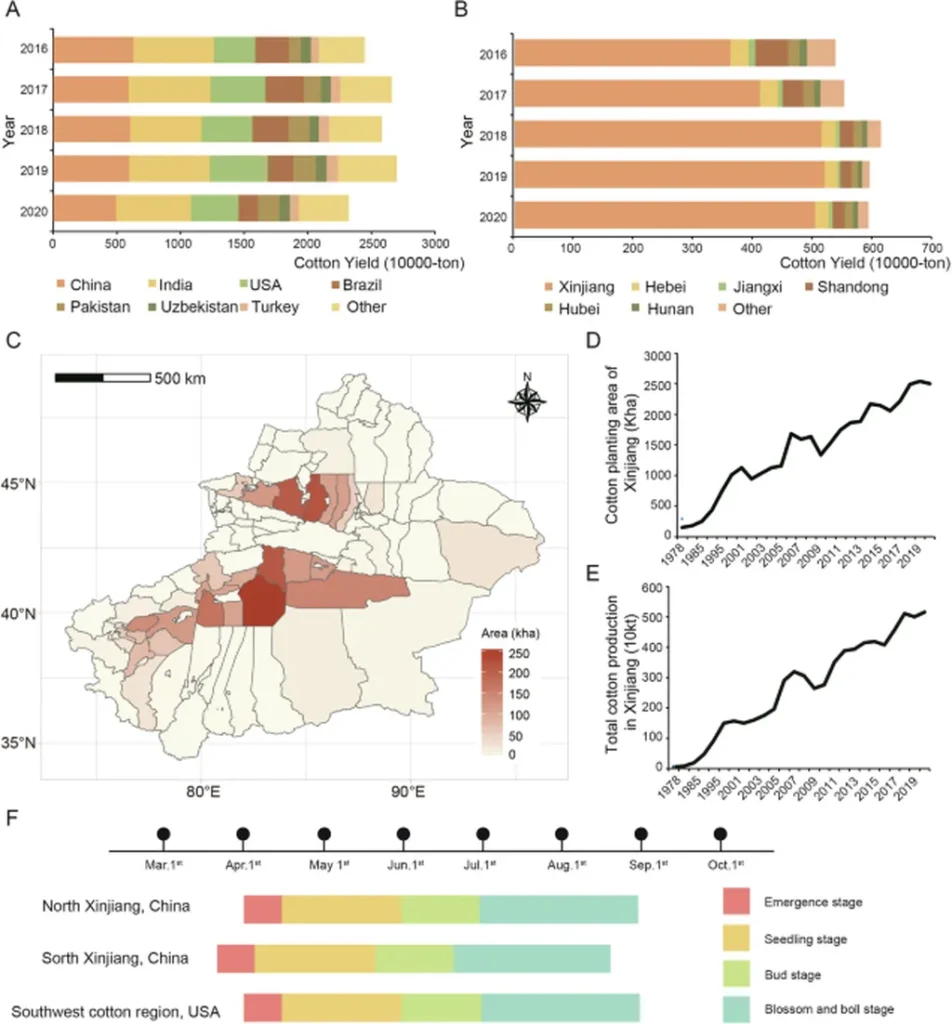In the heart of China’s cotton country, researchers are rewriting the rules of agriculture, and their findings could reshape the global cotton industry and energy sector. Led by Hamad Khan at the State Key Laboratory of Cotton Bio-breeding and Integrated Utilization in Anyang, Henan, a groundbreaking study has unveiled how optimizing sowing dates can dramatically boost cotton yields, even as climate change throws curveballs at farmers.
The research, published in the journal ‘Agricultural Water Management’ (which translates to ‘Agricultural Water Management’ in English), delves into the intricate dance between cotton plants, water, heat, and time. The team monitored six different sowing dates over two years, tracking how cotton responded to varying temperatures and rainfall patterns.
The results are striking. In 2023, the optimal sowing date (S4) led to a staggering 178% increase in seed cotton yield, while late sowing (S6) resulted in a 10% decrease. But the story doesn’t end there. In 2024, delayed sowing had an even more adverse impact, with yields plummeting up to 39%. “The timing of sowing is crucial,” Khan explains. “It’s about synchronizing the plant’s growth stages with the available water and heat resources.”
The study also shed light on water use efficiency (WUE) and water productivity (WPc). Late sowing treatments guzzled more water, especially during the flowering and boll development stages, but converted it into yield far less efficiently. Early sowing, on the other hand, proved to be a water-wise strategy, maintaining high WUE and WPc even as rainfall patterns shifted.
So, what does this mean for the energy sector? Cotton is a thirsty crop, and irrigation accounts for a significant chunk of energy consumption in agriculture. By optimizing sowing dates, farmers can reduce water use, lower energy costs, and potentially even mitigate the need for energy-intensive irrigation methods.
Moreover, the study’s integration of temporal sowing optimization, multi-sensor environmental monitoring, and resource coupling analysis paves the way for precision agriculture. This approach could revolutionize cotton farming, making it more resilient to climate change and more efficient in resource use.
Khan envisions a future where climate forecasting models are integrated with sowing date recommendations. “This could enable dynamic, site-specific cotton management,” he says, “helping farmers adapt to changing climates and optimize their resources.”
As the world grapples with climate change, this research offers a beacon of hope. It’s a testament to the power of science and technology in shaping a sustainable future for agriculture and the energy sector. The cotton industry, and the world, is watching. The future of cotton farming could very well be in the timing.

